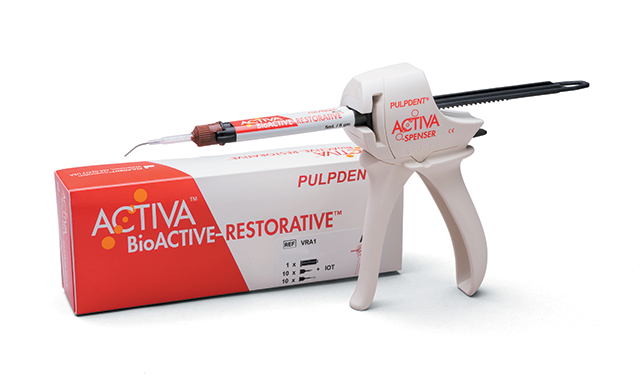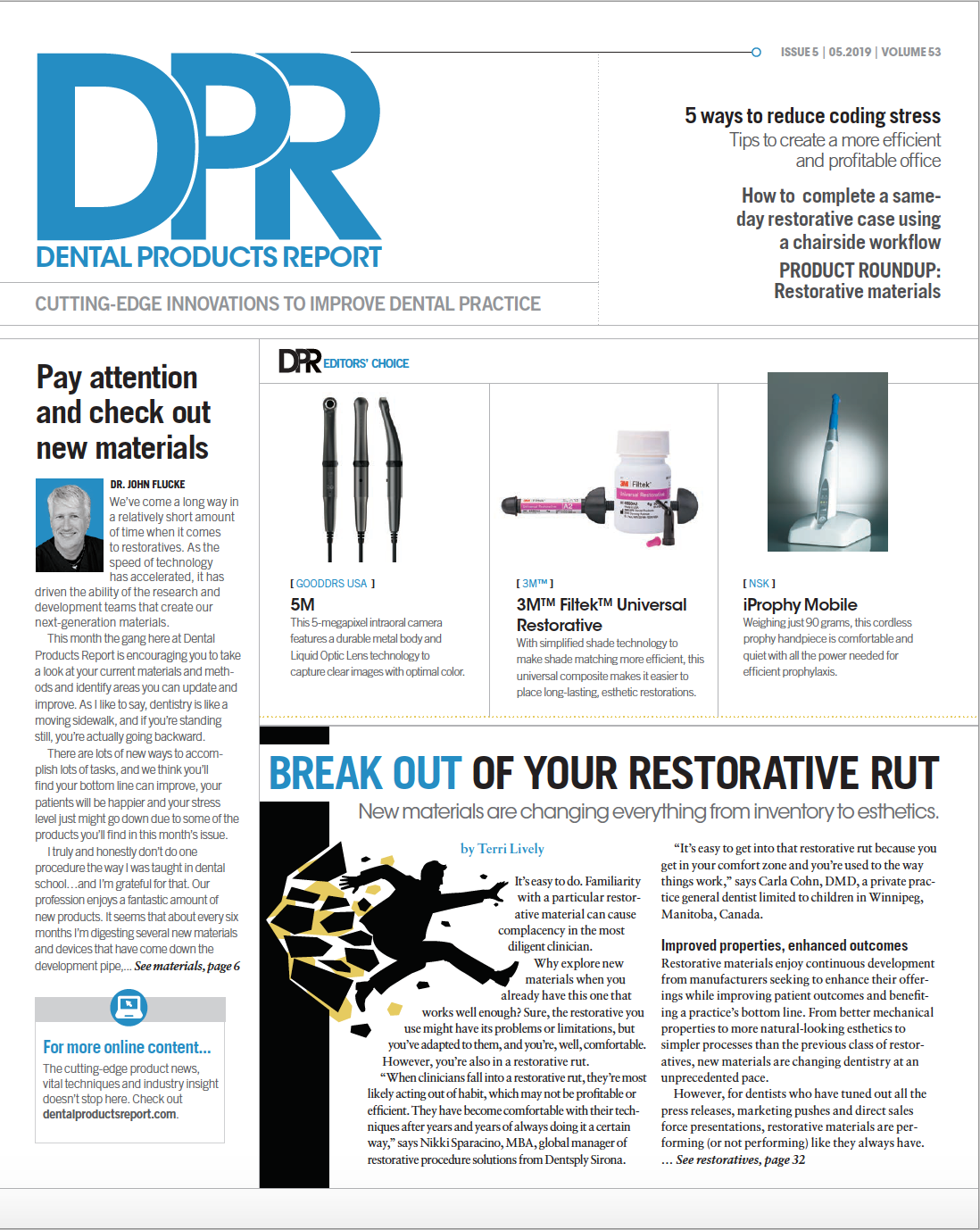The benefits of bioactive restorative materials
How ACTIVA™ BioACTIVE-RESTORATIVE™ leads to longer-lasting restorations.

After amalgam, the standard for replacing missing tooth structure became inert, tooth-colored dental composites made from ceramic particles and a resin base. These restorations offer a more esthetic look but require multiple steps and exacting precision. Even when well-crafted, research indicates traditional composite fillings last an average of five to seven years.1
“Long before composite resins, we had the original bioactive material: glass ionomer,” says Susan McMahon, an accredited cosmetic dentist in Pittsburgh, Pennsylvania. “They leach fluoride, are cariostatic and form a chemical link to the tooth. They are far less technique-sensitive, but glass ionomers are not as esthetic as composite and do not wear as well.”
Pulpdent worked to improve the bioactivity property in fillings, designing a product to better protect pulp while delivering a stronger, more active filling through the bond it created with teeth. The result was ACTIVA™ BioACTIVE-RESTORATIVE™.
Related reading: How bioactive materials are changing restorative dentistry
ACTIVA BioACTIVE-RESTORATIVE is a dental resin that elicits a chemical reaction from the tooth, releasing more calcium, phosphate and fluoride directly into the tooth structure to help it to actually repair itself. Whether the lesion is from decay, fracture or trauma, the interface between the material and the tooth is said to result in less vulnerability to decay over time.
ACTIVA consists of a bioactive ionic resin matrix-a rubberized resin component to act as a shock absorber-and a reactive ionomer glass filler. It’s designed to elicit a response that stimulates apatite formation and the natural remineralization process that unites the restoration and tooth together, while also sealing margins against microleakage, secondary caries and failure.
“I like it because it not only makes beautiful durable restorations, but it is a great choice for minimally invasive fillings. It’s more like natural tooth structure,” Dr. McMahon says.
Since the bioactive composite releases ions directly into the teeth, Dr. McMahon chooses ACTIVA for areas that are prone to recurrent decay, such as interproximal boxes of Class II restorations and root surface fillings.
“ACTIVA polishes well. This material is getting closer and closer to the natural properties of the tooth,” Dr. McMahon says.
Trending article: The evolution of oral surgery

ACTIVA is formulated to offer the advantages of glass ionomers in a stronger, resilient matrix. It not only chemically bonds to the tooth and releases calcium, phosphate and fluoride, but it also offers better bioactive properties than regular glass ionomers.
Dr. McMahon has been using this product for about four years, and she says she believes in Pulpent’s research and dedication to delivering an improved composite product that will result in longer-lasting, better seated restorations.
“I choose it because I have confidence in their research and their company. It works well and makes beautiful, conservative restorations,” she says.
Dr. McMahon says she uses the product in a variety of restorative applications, including pit and fissure caries. She says it allows her to remove the smallest amount of tooth, retaining the healthy tooth structure and restoring it with a material that supports the natural remineralization process. According to Dr. McMahon, her patients are actually happy and excited about the prospect of fillings that include a material that will end up being helpful to the affected tooth, which makes using ACTIVA a positive experience for both the dentist and the patient.
Bioactive materials that behave well in a moist environment, help to neutralize the conditions that cause dental caries and maximize potential remineralization may become the new standard, according to Dr. McMahon.

ACTIVA BioACTIVE Bulk Flow Marks Pulpdent’s First Major Product Release in 4 Years
December 12th 2024Next-generation bulk-fill dental restorative raises the standard of care for bulk-fill procedures by providing natural remineralization support, while also overcoming current bulk-fill limitations.